8i | 9i | 10g | 11g | 12c | 13c | 18c | 19c | 21c | 23ai | Misc | PL/SQL | SQL | RAC | WebLogic | Linux
Amazon Web Services (AWS) : Relational Database Services (RDS) for SQL Server
This article describes the creation of a database using Amazon Web Services (AWS) Relational Database Services (RDS) for SQL Server, a Database as a Service (DBaaS) offering.
Related articles.
Create a New SQL Server Service
Select the RDS option from the service catalog.
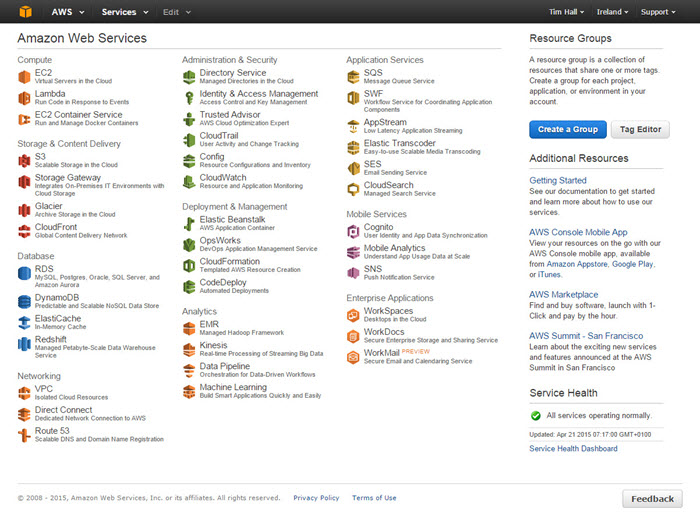
Select the "SQL Server EE" option by clicking the "SQL Server" tab and clicking the "Select" button next to the "SQL Server EE" option.

Select the high-availability state of the service. In this case I'm using the non-production option. When you've made your choice, click the "Next Step" button.
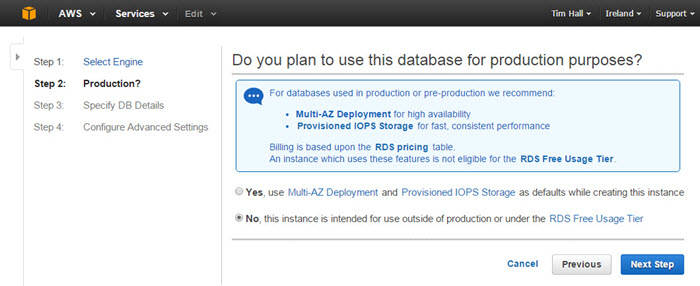
Enter the database details. If you are trialling the service, be careful about the options you pick. If you pick the on-demand license model your service costs will include the SQL Server licensing, making the hourly cost significantly more expensive. Once you are happy with the settings click the "Next Step" button.
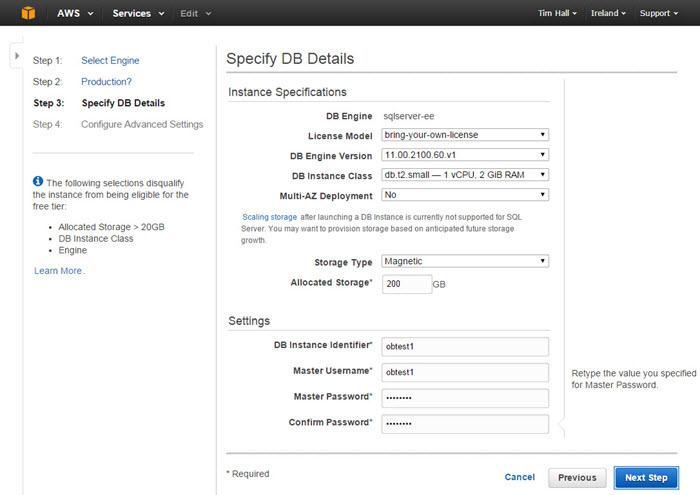
Enter the advanced settings, making sure the backup and maintenance settings are correct for your service. Once you are happy with the settings click the "Launch DB Instance" button.
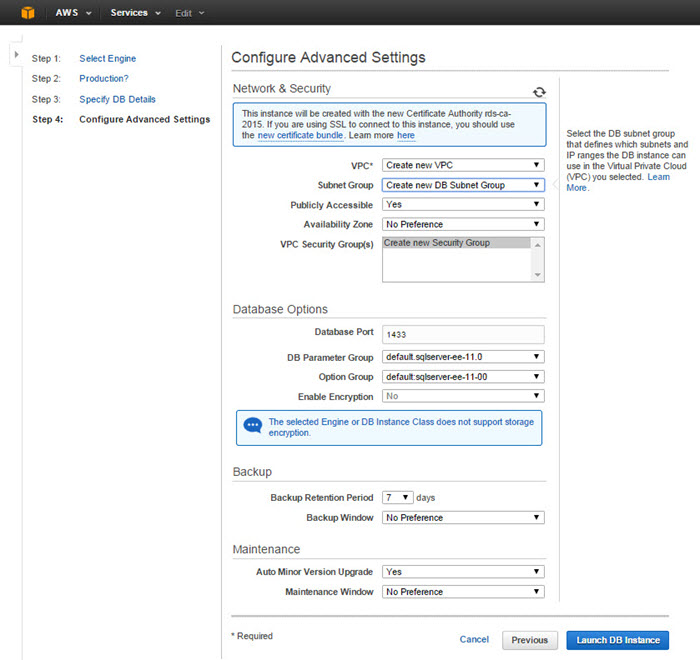
Click the "View Your DB Instances" button to see the status of your service.
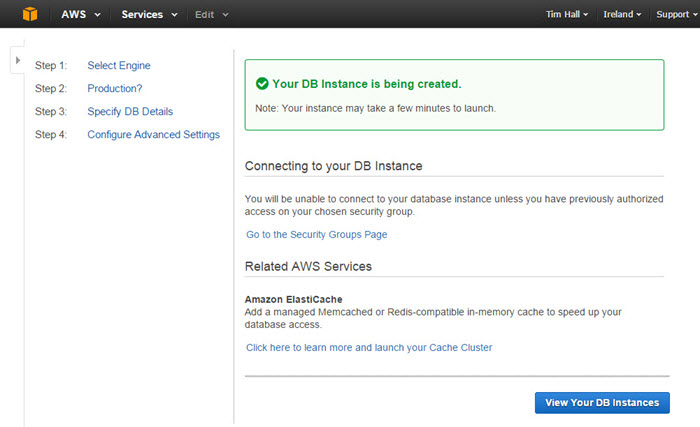
The resulting page shows the status of your services. Once the status is "available", you can connect to the service. If you want to see the monitoring information for the specific service, click the checkbox next to the service and click the "Show Monitoring" button.
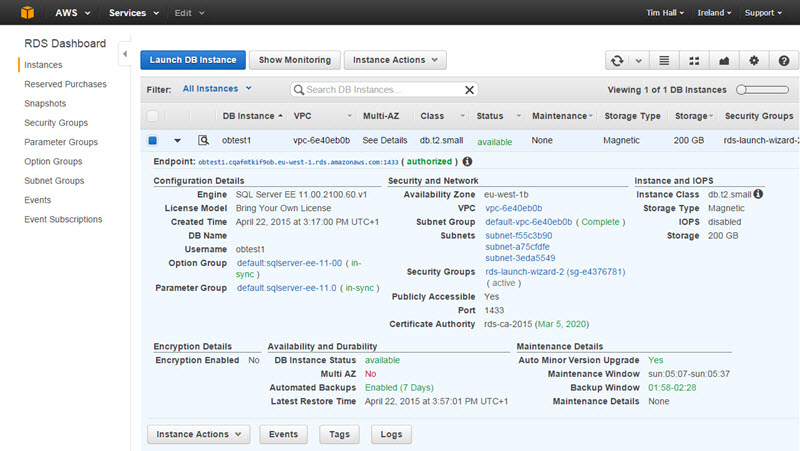
The following picture shows the monitoring graphs.
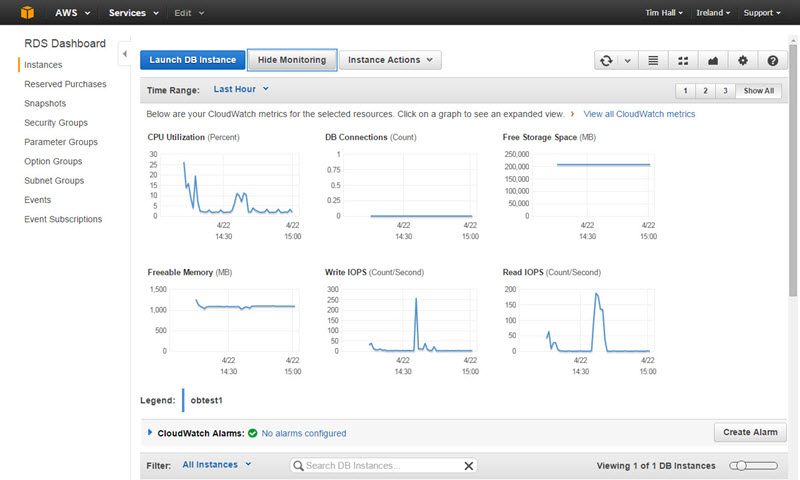
Connecting to the Service
Open SQL Server Management Studio and connect using the endpoint information from the "Instances" page and the credentials you used while setting up the service.
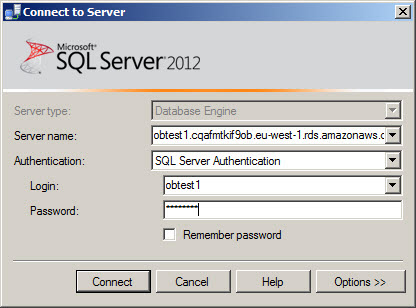
The instance will appear in the SQL Server Management Studio tree.

You create a new database in the normal way (right-click on "Databases" and select "New Database"), enter the details and click the "OK" button.
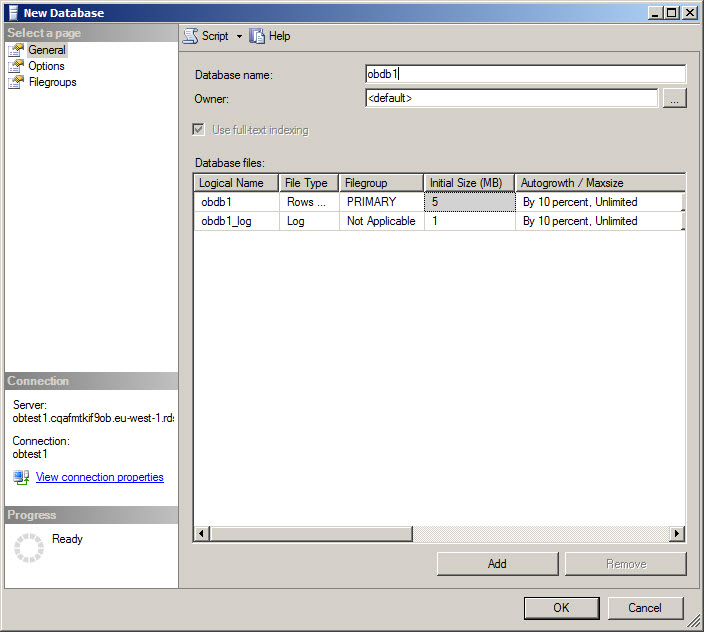
The new database is shown in the SQL Server Management Studio tree.
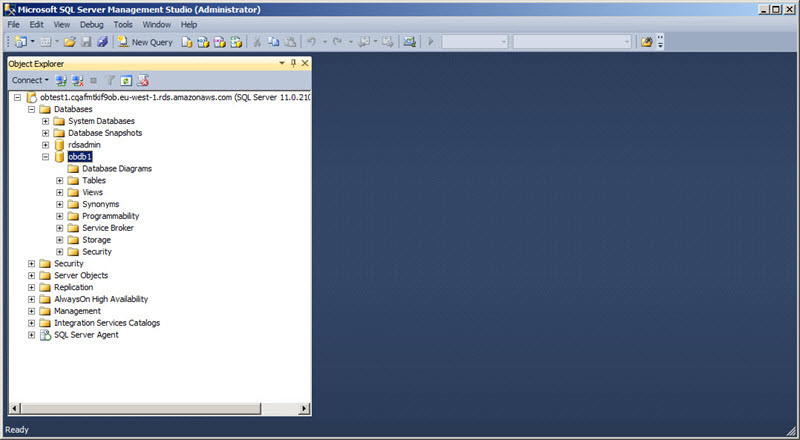
For more information see:
- Amazon Wes Services (AWS)
- A Cure for Virtual Insanity: A Vendor-Neutral Introduction to Virtualization Without the Hype
- AWS RDS: Appendix: Common DBA Tasks for SQL Server
Hope this helps. Regards Tim...